Enjoy the Little Things
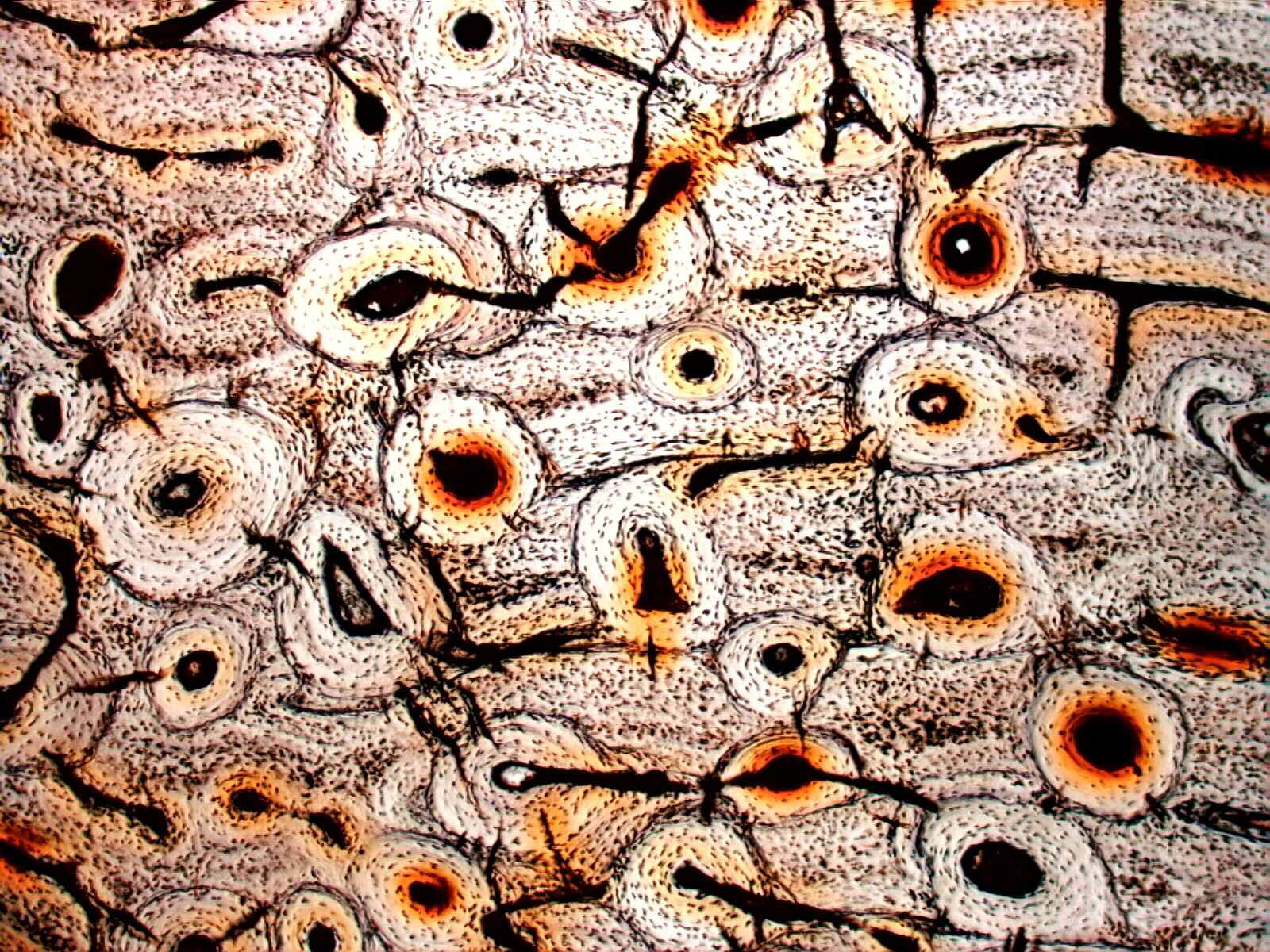
Dinosaur Bone
Thin sections of dinosaur bones show the mineralization process in
order to become a fossil-replacement minerals are usually silica,
calcite, carbonates, and iron.
Read More Here
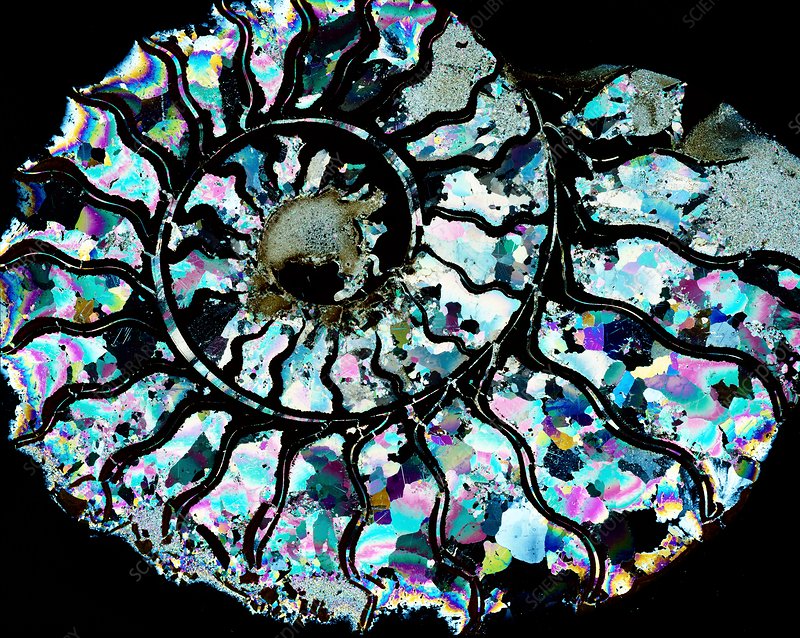
Ammonite
Thin section of an ammonite displaying the chambered shell of the
cephalopod. Extinct for 66 million years, the fossil remains
can be found throughout the world.
Read More Here
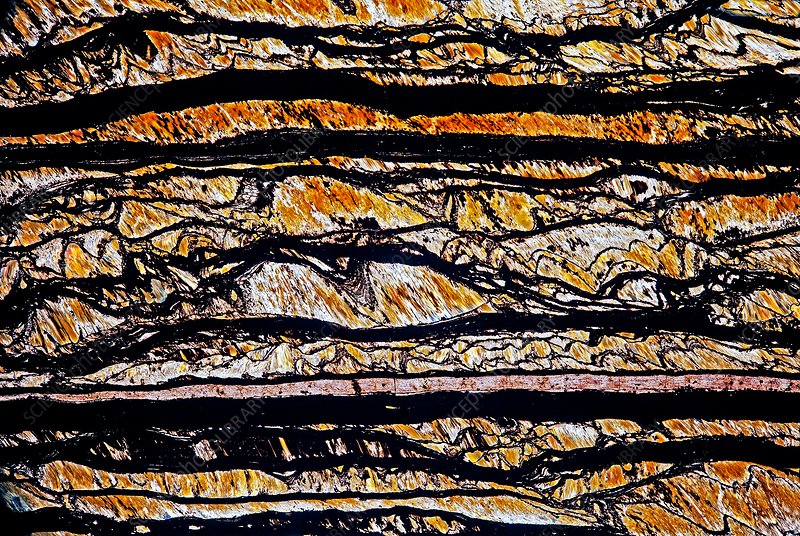
Tiger's-eye
Thin section showing the fibers of tiger's eye, the semi-precious
gem from the quartz group. Ancient Egyptians often wore tiger's-eye
to give strength and navigate the after life.
Read More Here
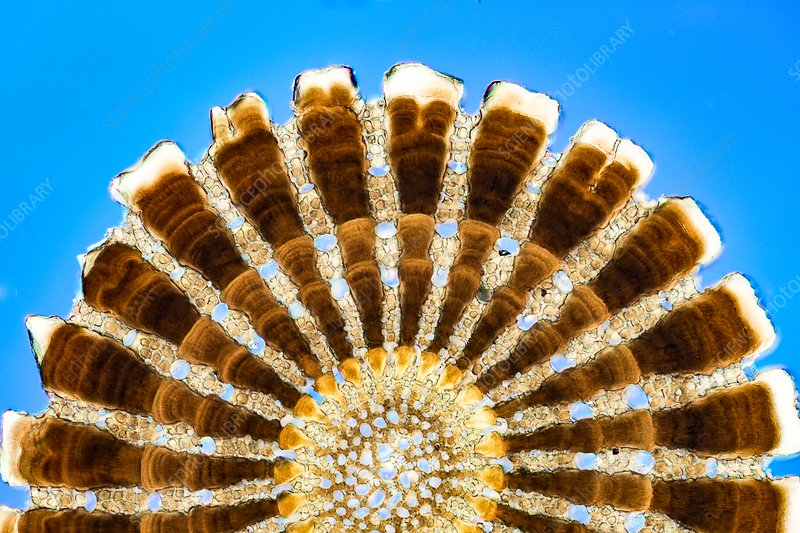
Sea Urchin
Cross-section of a sea urchin spine. The spines are mostly composed of calcium carbonate and magnesium. The tip of the spine contains a gland that produces the toxins.
Read More Here
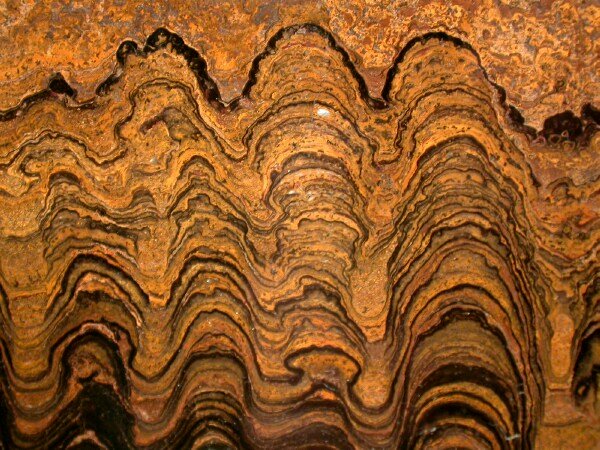
Stromatolite
Earth's oldest fossil, dating back 3.5 million years ago, formed by cyanobacteria. They introduced more oxygen into the atmosphere and allowing the next evolutionary step.
Read More Here
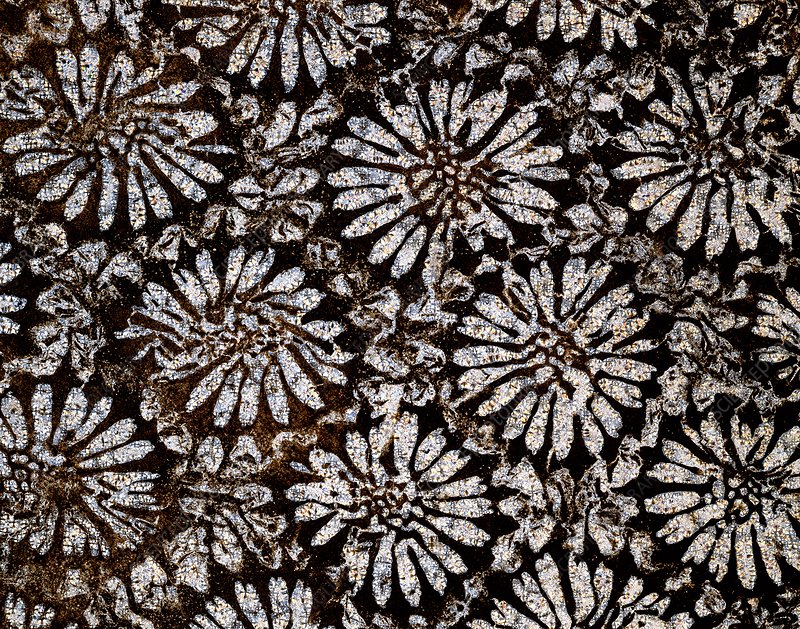
Star Coral
Thin section of star coral-formed in reefs of shallow to moderate depths, but are most abundant in Caribbean waters. Fossils have been found dating to the Jurassic period.
Read More Here
Taking a closer look at food!

Orange Peel
India brought sweet oranges to Italy, Spain, and Portugal in the 1400s-there were only sour oranges before. They need exposure to ethylene to turn orange if not grown in the subtropics.
Read More Here
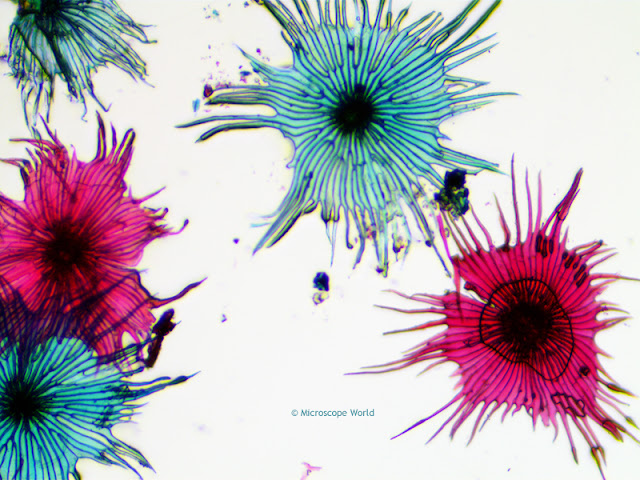
Apple Cells
Cross section showing the cell wall, chloroplast, and red anthocyanin pigmentation. Anthocyanins were traditionally used as a natural dye or food colorant.
Read More Here
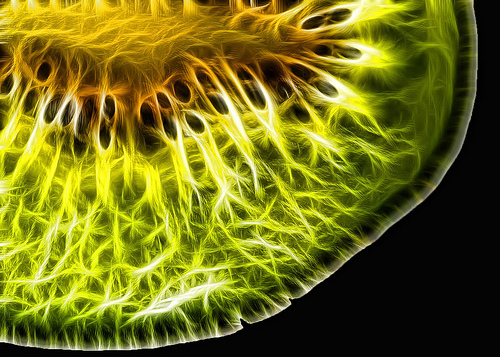
Kiwifruit
A fairly new fruit crop that New Zealand started growing commerically in the 1940s, and was introduced to the United States in the 1960s. They also contain more vitamin C than oranges.
Read More Here
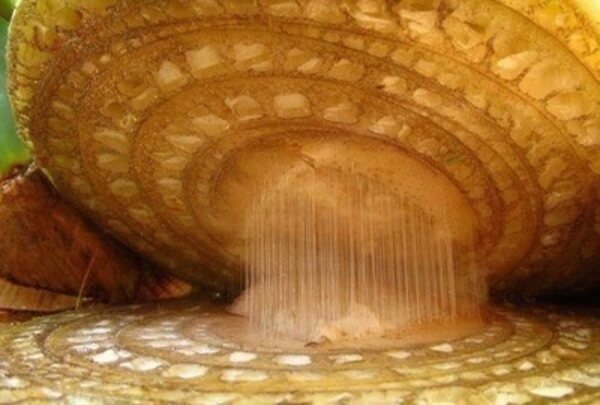
Banana Slice
Believed to be the first fruit on Earth, bananas are grown from bulbs instead of seeds and take 9-12 months to harvest. Instead of a tree or palm, the plant is actually an herb.
Read More Here
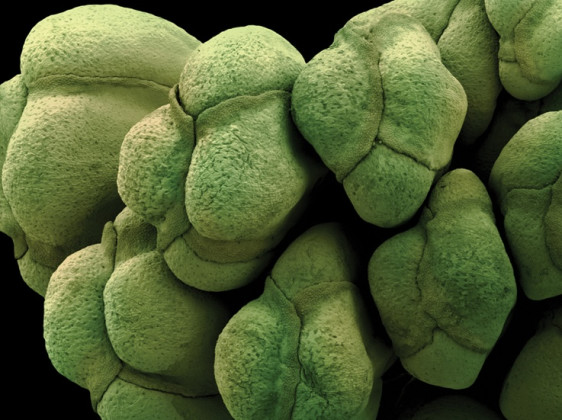
Broccoli Bud
Broccoli, also known as Italian Asperagus, is grown worldwide. The heads cannot be harvested by a machine so it must be hand cut with a knife, making it a labor-intensive crop.
Read More Here
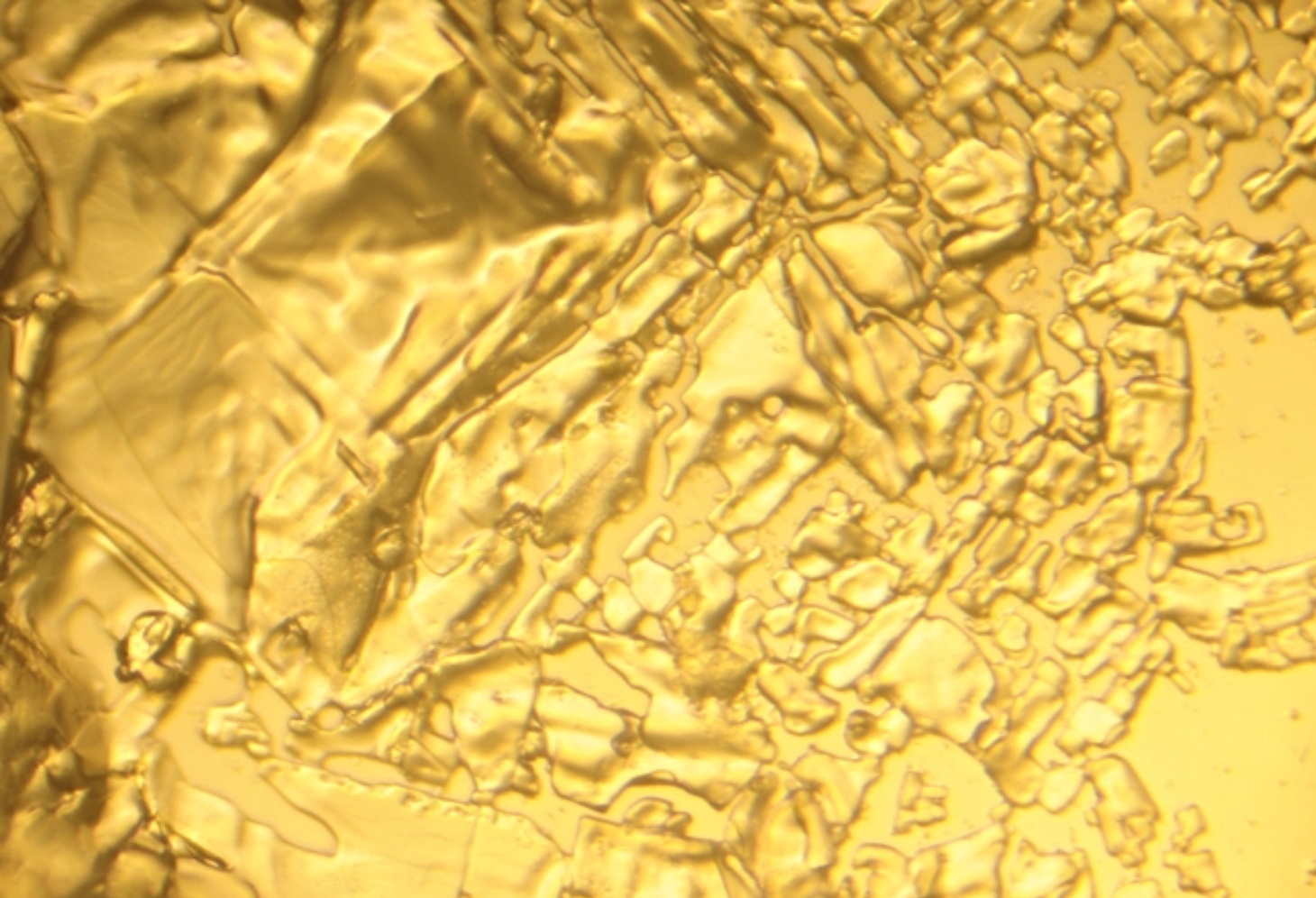
Honey
Bacteria growth in honey is limited due to low water content and high acidity, creating a nearly eternal shelf life (edible honey has even been found in thousand-year old Egyptian tombs).
Read More Here